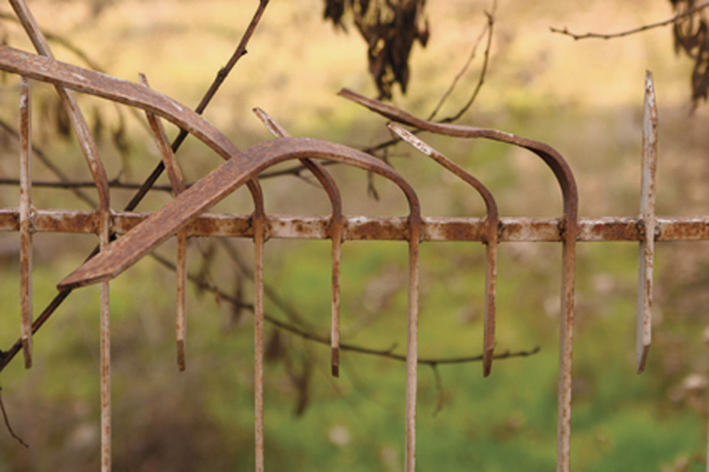
Beirut
Nafas: Beirut
Espace SD
October 12–November 17, 2006
Not long after the bombs began to fall on Lebanon this past July, a flood of creative output from inside the country and abroad began to spread across the internet. In other places around the world, the kind of heavy battery that Beirut was seeing would probably send people running for bomb shelters; in Lebanon, it seems to have sent people running for their cameras and keyboards.
The result was a flood of blogs, video clips, sound recordings, posts of drawings and photographs, poetry offerings, and more — a body of material asking, as local art mavens Sandra Dagher and Zena al-Khalil saw it, to be put on public, three-dimensional display. Thus arose Nafas: Beirut, a multimedia exhibition at Dagher’s gallery, Espace SD.
While occasional pieces in the hurriedly assembled show came off as flat-footed or slightly overwhelming, an encouraging number delivered sharp, surprising takes on the state of affairs.
Fadia Kisrwani Abboud and Maissa Alameddine, in their installation Return to Sender, invited gallery visitors to scrawl notes on leaflets simulating those dropped by Israeli aircraft to warn Lebanese to abandon their homes. On the gallery floor, the paper scraps lay in a scattered pile, as if dropped from above. The artists plan to mail the messages in bundles to the Israeli Defense Ministry.
In Self-Portrait With Remote Control, Randa Mirza approached the problem of experiencing the atrocities of war through the filter of cable television, by inserting herself in a video still of Red Cross workers carrying a dead infant on a stretcher. Though not in uniform, Mirza appeared, at a glance, to be a member of the rescue team. The remote control she pointed at visitors was a challenge to the effrontery of viewing such scenes in comfort.
Khalil’s puckish Super Star also took up the media’s role in the war, in this case addressing the frenzy of attention centering on Hezbollah leader Sayyed Hassan Nasrallah. Super Star was sheikh-meets-swinger chic: the smiling potentate’s enormous head was rendered in pink acrylic paint against a kaleidoscopic background of purple and gold, with glittery hexagons bobbing by. The promiscuity of the aesthetic effectively prodded a reconsideration of a sober, and in ways unapproachable, subject.
In execution and in force of vision, Nafas: Beirut demonstrated a great disparity from piece to piece. Sometimes the breadth of the general theme — this summer’s war and what’s next — brought irresolvable pieces into uncomfortable proximity. (What to make, for example, of a video evoking snorted glitter, in this context?) And the earth is yet to be graced by a blogger whose words don’t wither in the harsh light of the gallery wall.
But variety was the point of the show. “We knew from the beginning that we wanted to make [the exhibition] a platform, we wanted to make it as flexible as possible,” Dagher noted. In addition to exhibiting the artwork, Nafas: Beirut served a documentary task, acting as a sort of time capsule of one moment in Lebanon’s political and cultural life, and also what might be called a paramedic task, to resuscitate the body artistic. In keeping with this last priority, Dagher and Khalil organized a monthlong slate of events — concerts, lectures, and video screenings — to go along with the show and to serve as loci for what they hoped would be a reemergent scene.
Several of the 45 artists in the show were caught outside of the country at the war’s outset; others live permanently abroad. In Broken Hill, Mireille Astore, based in Broken Hill, Australia, photographed every house in town and chained the pictures together to create footage for her video 3494 Houses + 1 Fence. Into hectic strings of suburban calm she spliced a peaceful scene of urban destruction, in the form of fence mangled by explosives in Lebanon.
Bespeaking considerably less exertion, but managing, nonetheless, an unadorned symbolic potency, was Shawki Yousef’s video Tag & Possibilite(s) d’un arbre, a compressed video biography of a gigantic cedar tree growing in a Parisian park. Likely older than Lebanon itself, the tree — not so picturesque a specimen as the one that appears on the Lebanese flag — accommodates in its lower boughs young men playing acoustic guitars and, somewhere up top, a nest of unseen rooks. At dusk the birds of appetite replace the carefree music of the day with an ominous concert of their own.
Amid this material from outside the war zone appeared the exhibition’s most eloquent image, Sintia Karam’s photograph of a man sleeping with his mouth open in an otherwise empty Berlin U-Bahn car whose video monitors are relaying footage of a preposterous fireball over the Lebanese capital. War in the Middle East? What a snooze.